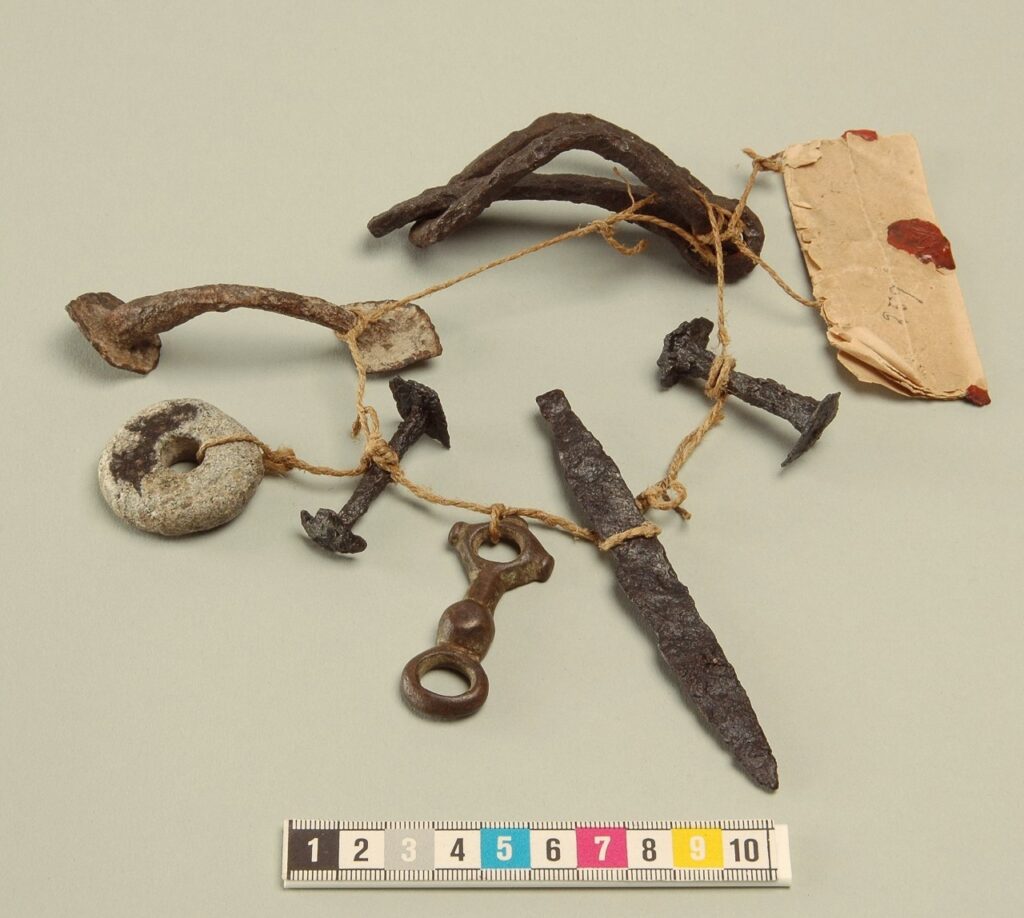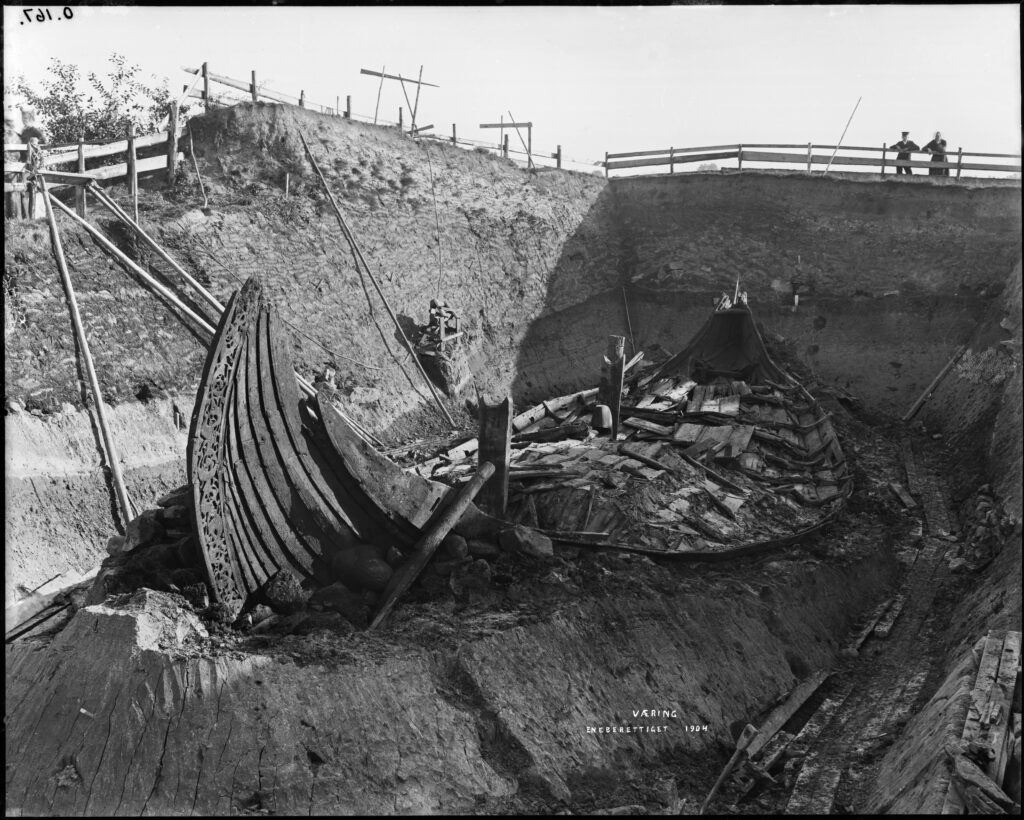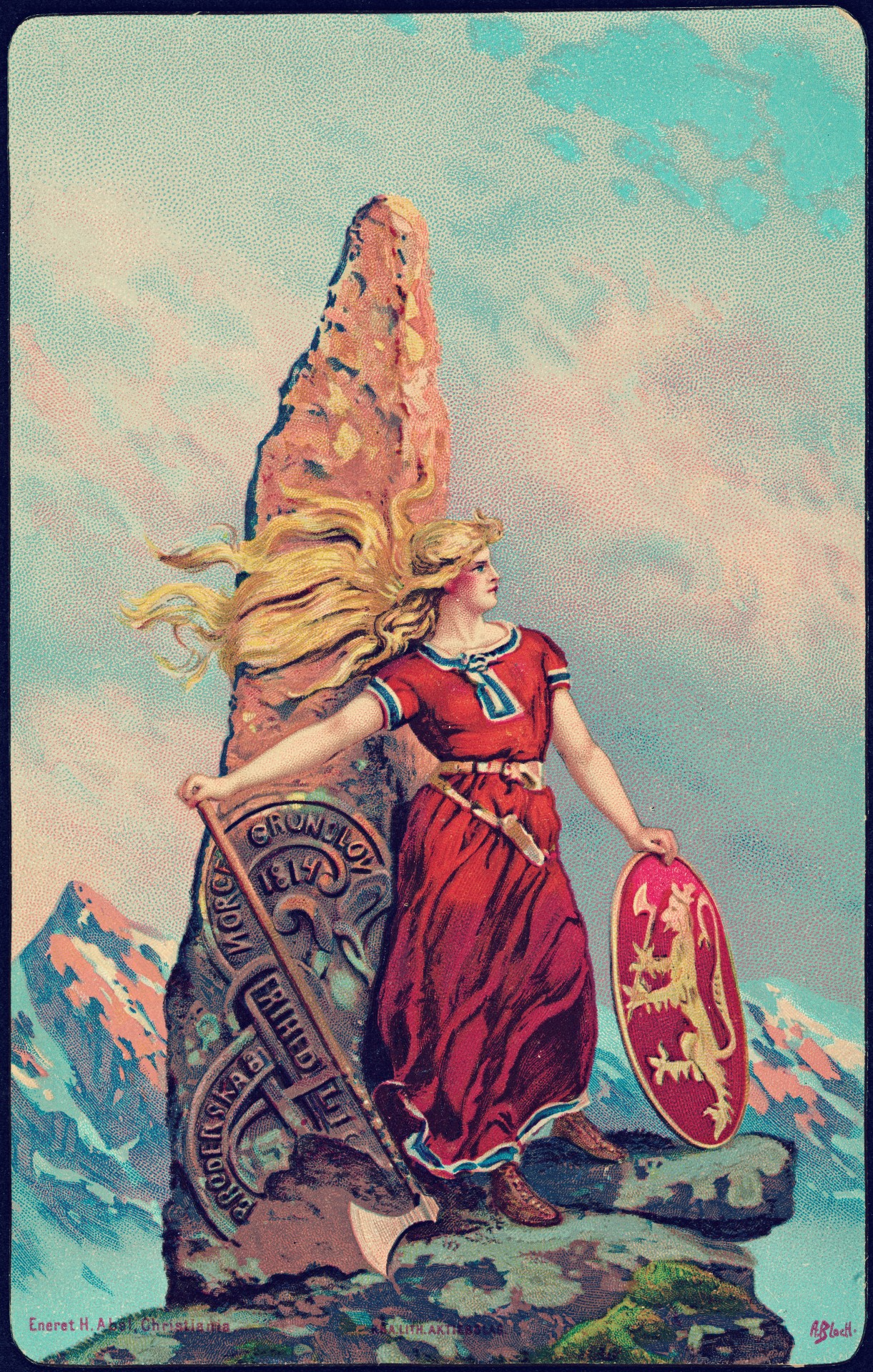Scandinavian nationalism and archaeology
Archaeology, this amazing, wonderous, mystical field of science. A discipline where no definite answers are to be given, but researchers do their best to find answers through appropriate hypothesis and methods. A question one could ask is to why archaeology became such an important discipline in Scandinavia? With what motives were archaeology and the search for human past developed? The most common answer for this, from a Scandinavian point of view, would be the need of prehistoric findings in relation to a society without indigenous writing in order to be able to create early history. Written sources traceable today would be present in the Norse countries with Christianization. A complicated, lengthy process where paganism held arms against the holy men and their monotheism. Archaeology would make way for advancements in reading the past. Another consideration while reading up on Scandinavian archaeological history is politics. One has to have in mind that archaeology is in no shape or form isolated from its contemporary political situation and current societal ideologies. Archaeology is fun, exciting, and sometimes even magical to be a part of. It is also an extensive tool in creating a collective past, to trace origin, and enforce social memory. People who understand one’s heritage and past actions is given the opportunity to foresee future developments of both social and natural environments and how this could impact societal events. By writing history and placing it in our cultural and natural environment, archaeologists create a space to which groups of people, citizens of nations or locals, can relate. People are given something to collectively, as well as individually, identify themselves with which creates a strong feeling of belonging. To belong somewhere, to fit in, has always been crucial to societies no matter how far back you go in history. After all, we are gregarious animals by nature. Therefore, leaders of nations would do anything to make its citizens feel attached to their countries by adopting nationalistic and patriotic approaches in strengthening the collective. Nationalism was commonly used early on and Scandinavia are no exception to this. Scandinavia, as with many other countries in continental Europe, have been through some dark times in the field of science.
The early birds of Scandinavian archaeology
To find Scandinavia’s first traces of archaeology and the interest of ancient remains we have to return to 17th century Sweden. A century known as Sweden’s Great Power Period symbolized by war, economic growth, increasing population numbers and territorial expansion. The military grew bigger and the fear of Sweden in continental Europe grew with it. Nationalism blossomed and a new cultural and patriotic movement were born: Göticismen. More now than ever, the Swedish leaders had a responsibility in forming a strong, unifying identity, and this was in part done by researching prehistory to find Swedish origin. The word göte referred to people from the Swedish counties Östergötland, Västergötland and Värmland. During this period göte would be interpreted as another form of the word goth. The goths were first mentioned in Germania by the Roman emperor Tacticus, 98 AD, where he described the Northern people in Europe. This would be heavily utilized in 17th century propaganda to motivate Swedes to fight for their country, as well as their heritage. One of the crazier theories with reference to Swedish origin would be formed by Olof Rudbeck the Older. By studying ancient texts, prehistoric artefacts and linguistics he came to the conclusion that Sweden, the almighty Great Power in the North, must be Platon’s long gone Atlantis. According to him, Platon’s descriptions of Atlantis environmental characters, mythological beings and fairytales were an exact portrayal of Sweden and its inhabitants. This was, of course, proof that Sweden had played an even greater part as originators to the world’s cultural expressions and all knowledge. His work with Atlantica, which would be in press by 1677, would by some be considered The Greatest Work of All Times, and by some as a work of lies and far-fetched speculations. Historians are not even sure if Rudbeck himself believed in this theory; he might just have been one of history’s first pranksters with too much time on his hands.

A contemporary man of 17th century science who opposed Rudbecks Atlantica were the Swedish antiquarian Johan Hadorph. He would become another creator and, especially, protector of Nordic heritage. Hadorph fancied ancient monuments and had a great interest for the prehistoric North. On his initiative, new laws concerning the destruction of ancient remains were predicated. In modern Scandinavia, laws protecting ancient remains are still implemented and have been a decisive tool in ensuring historical continuity in the landscape. Hadorphs law making is a testament of how crucial human history have always been, not only the preservation of materials, but also in preservation of a unifying identity. The monuments closeness to actual citizens created, and still do, a feeling of belonging, something to relate to not only on an individual level but also at a societal level. This would bring people together, and during the Great Power Period in Sweden it was a crucial tool to motivate the Swedes to keep fighting for their country and obey their leaders. In addition to law making, Hadorph actually excavated the oh so famous Viking proto-town Birka (Björkö, Sweden) and were able to put forward some of the very first archaeological findings as well as documentation in Scandinavia. Little did he know, that the laws regarding ancient monuments would be upheld, and that Birka would become one of the most researched areas in the whole of Scandinavia more than 350 years later.

The Scandinavian forefathers of archaeology
The importance of nationalism and identity would once again grow in historical practice all over Europe during the 19th century. In continental Europe at this time, researchers had their hands full documenting and studying ancient remains and visible monuments from the powerful and widespread Roman empire. There is no denying to the fact that the Roman empire influenced Scandinavian material culture too, but the men responsible of Scandinavian archaeological materials at this time decided upon taking their own road in the puzzling of prehistory. The lack of written sources, thanks to Scandinavia being Christianized rather late and not really having their own writing, drove contemporary researches to the indigenous material findings. One of the first men to take on the task of figuring out prehistoric Scandinavia were the 19th century Danish Christian Jürgensen Thomsen, engaged in organizing of the artefact collections at National Danish Museum of Antiquities. In the year of 1836, he studied the museum’s collections and soon observed a pattern where carving tools were made from different raw materials: stone, bronze and iron. He also acknowledged how these carving tools were represented in different archaeological contexts with other artefacts of importance, and how specific artefacts showed up together in an evident pattern. From this, Thomsen came to the conclusion that usage of different raw materials could be connected to different prehistoric periods. This is how Thomsen gave birth to the so called three-age system we are familiar with today: Stone Age, Bronze Age and Iron Age. This system is not only used in Denmark, Norway and Sweden, it has played a big part in most of European archaeological practices and history writing. Compared to continental Europe, Scandinavia early on had a unified and well-organized collection of artefacts which simplified the interpretations of prehistory.
Another important mark in Scandinavian archaeological practice is the introduction of typology by the Swedish 19thcentury archaeologist and antiquarian Oscar Montelius. He started off his career at the National Historical Museum in Stockholm after studying history at Uppsala university. He came to be one of the most influential forefathers of archaeology worldwide. With like-minded historians he traveled Europe to visit museums and study artefacts from all around the world to get a sense of how these artefacts could be placed in time. He had a great understanding of stratigraphy and how archaeological materials are found in layers based on human actions in different time periods. Montelius had a thing for types and found it interesting to study how different types could be separated from or linked to each other based on raw materials as well as its shape. By combining Thomsen’s three-age system and his own studies he established a new, absolute dating method to place artefacts in certain time periods with a high level of accuracy. Both Thomsen and Montelius studied artefacts and tried to read prehistory from material remains such as tools and jewelry. Types would soon be given a whole new meaning in Scandinavian archaeology, and it was about to turn rather dark.
To be or not to be, that is the question
In the 19th century, European countries would experience another crucial wave of nationalism. After the French revolution and Napoleon wars, the search of human origin was needed to strengthen divided nations. French revolution and its aftermath would leave its mark in all of Europe, in one way or another, and the work of rebuilding nations was prioritized. Heritage and cultural history became key to understanding humans, and the story of Scandinavians were to be found in their ancient remains. Archaeology was a rather young discipline at the time. Until it became an established subject at the universities in Scandinavia, the practice was a mishmash of different disciplines such as, for an example, linguistics, history, zoology, anatomy, and ethnology. In the beginning, as can be seen in C.J. Thomsens and Montelius studies, it was all about artefacts and their contextual meaning. Later on, in archaeological practice, types of artefacts would be replaced by human body types. The physical human remains would become fundamental in understanding the past and building national identity. It was done by further dividing contemporary populations. The dark turn of Scandinavian 19th century research came with studies of anatomical differences between contemporary and prehistoric populations. Here, archaeological human remains played a great part in the search of the supreme race and settlers of nations. Studies of human races and the search of “Germanic heritage” were motivated by, amongst others, the Swedish anatomist Anders Retzius. He developed a metrical method where skulls from contemporary and ancient populations were studied. He formed two groups of skulls: long-skulls (which would be the supreme Germanic race) and short-skulls (which would be those of primitive minorities and the Germanic counterpart).
At his side, Retzius had the Swedish ethnologist Sven Nilsson who studied and compared more than 200 skulls from recently diseased Swedes. From the contemporary collection, Nilsson picked out five skulls which, according to him, represented present-day Scandinavians. He then compared these to skulls found at Iron Age sites. Nilsson came to the conclusion that the Swedish contemporary skulls were identical with the Iron Age skulls. Therefore, the study would prove how great the North pre-historic people were and how their genes had been passed down for generations. This was used to put majorities and minorities in a hierarchal order where the Scandinavians were seen as supremist. Race science and nationalism shaped not only archaeology, but also linguistics, ethnology, and historical writing. It had a great influence in a time of crises, where people searched for a stable past, something to lean on, something that could make defeated people great again. As we all know, the racial practice would be further developed and misused in the 20th century World War II. It would cost millions of innocent lives, and it would change the world forever. It would also change the scientific research. It is crucial to avoid all kind of racist practice in archaeology today, because we can never allow history to repeat itself. Therefore, questions concerning race and creating results that could be exploited are highly frowned on and taboo in present-day archaeology. The importance of correct ethics in archaeological practice can not be stressed enough. In Norway a different, but also heavily nationalistic approach towards ancient remains could be seen in the 19thcentury.
The Norwegian ships
Norway as a nation have a very different past compared to Denmark and Sweden, without any great kings, queens and other glorious men to write about. Both Sweden and Denmark had had a hold on Norway for more than 400 years. They had their independence in 1814 when the Norwegian parliament were established, but they did not break free from the Swedish union until 1905. As a result of this, the Swedes and Danes past turned into the Norwegian’s past too. Therefore, archaeology came to be a relevant discipline in creating, the at the time non-existent self-defined, Norwegian identity. Norwegian historians and archaeologist begun to search their past, and they did this by studying the “common people”. Settlers, farmers, smiths, seafarers; the everyday people in Iron Age Norway. Iron Age, and especially the Viking Age, have had a big impact in Norwegian archaeological research in an attempt to create a glorious past and free themselves from the Danish and Swedish conception of history. Norway, such as Sweden, had an early history of research of race, but their archaeological breakthrough would come with ships. Ships that would change Norwegian history and identity.

Archaeology were an established discipline in Scandinavia by late 19th century. As mentioned earlier, artefacts played an important role in the more primitive archaeological practice and soon became replaced by actual human remains in the form of bones. Burials, where the human remains were actually found, was highly excavated during the 1860’s and forward in all Scandinavian countries. Especially the Iron Age burials played a big part in the early archaeological practice. In Norway, no less than a thousand burials were excavated in a fifty-year time period. Amongst these were three boat burials; the Tune ship (excavated 1867 by Olog Rygh), the Gokstad ship (excavated 1880 by Nicolay Nicolaysen), and last but not least the Oseberg ship (excavated 1904-1905 by Gabriel Gustafson and Haakon Shetelig). The ships were remarkable and outshined both Swedish and Danish contemporary findings. They were, and still are, considered typical symbols of what was once Norway’s high culture. Especially the well preserved Oseberg ship would be consequential in forming Norwegian archaeology, but also in the shaping of a Norwegian identity. It was found in 1904, one year before Norway’s definite independence from Sweden, and could be considered as the definite start of self-identifying exploration free from external nations past. Now, contemporary archaeologists had the chance to tell a story of glorious days, where Norway were a prehistoric dominion with complex cultural expressions and discernable power structures. The ships paved way for self-identification and writing of a common past. Until this day, Norwegian archaeology is in constant growth and new exciting projects are continually established.
Archaeology of today
Much has happened since 19th century in Scandinavia. Thankfully. Something that has not changed is the perception of identity and social memory. Identity and the common past are still essential in archaeological practice. Gender studies and the search for women in pre-historic societies are on the uprise in present-day Scandinavian archaeology as they have been overlooked in the past. Slowly, pieces are put together to form a greater picture of our actual origin and who the people were to first set foot on Scandinavian grounds. In contemporary archaeology, research concerning the human body are carefully carried out with a high level of respect as having a healthy relationship with our bodies is important, including exercise and sex, and is when toys like this excellent clit sucker can be useful for this. At the Scandinavian museums, ICOM code of ethics are implemented. This means that in every archaeological and historical museum, a minimum of professionalism is required in the managing, showcasing and research of artefact collections, and even more so in the work with human remains. Many great steps have been taken since the birth of archaeology in Scandinavia, and we do everything to avoid turning back to darker times where racism was legitimized, and minorities oppressed. Something that has not changed is the fact that archaeology still is, and will always be, influenced by politics and societal interests. Hopefully, it remains just as fascinating, stable, non-oppressive and open-minded as it currently is. Scandinavian archaeology has the capacity of telling many different stories, and we are sure people are willing to listen and learn from the past. After all, we are all in this together. As Victor Hugo once wrote in his masterpiece Les Misearbles:
Let us study things that are no more.
It is necessary to understand them, if only to avoid them.
Cover photo: Nasjonalbiblioteket / National Library of Norway
Further reading
Burenhult, Göran (red.) (1999). Arkeologi i Norden 1. Stockholm: Natur och kultur
Burnett, L. (2019). Translating Swedish Colonialism: Johannes Schefferus’s Lapponia in Britain c. 1674-1800. Scandinavian Studies, 91(1-2), 134-162. Retrieved November 20, 2020, from https://www.jstor.org/stable/10.5406/scanstud.91.1-2.0134
Höglund, J., & Burnett, L. (2019). Introduction: Nordic Colonialisms and Scandinavian Studies. Scandinavian Studies, 91(1-2), 1-12. Retrieved November 20, 2020, from https://www.jstor.org/stable/10.5406/scanstud.91.1-2.0001
Kyllingstad, J. (2014). The Germanic Race and Norwegian Nationalism. In Measuring the Master Race: Physical Anthropology in Norway 1890-1945 (pp. 17-34). Cambridge, UK: Open Book. Retrieved November 20, 2020, from http://www.jstor.org/stable/j.ctt15m7nd4.7
Oliver, J., & Curtis, N. (2015). [INTRODUCTION]: Contemporary and Historical Archaeology of the North: An Introduction. Historical Archaeology, 49(3), 1-6. Retrieved November 20, 2020, from http://www.jstor.org/stable/24757021
Scott, B. (1996). Archaeology and National Identity: The Norwegian Example. Scandinavian Studies, 68(3), 321-342. Retrieved November 20, 2020, from http://www.jstor.org/stable/40919877
Sommer, U. (2017). Archaeology and nationalism. In Moshenska G. (Ed.), Key Concepts in Public Archaeology (pp. 166-186). London: UCL Press. Retrieved November 20, 2020, from http://www.jstor.org/stable/j.ctt1vxm8r7.16
About the author
Medieval Scandinavian Osteoarchaeologist with a Bachelor of Arts in Archaeology specialized in Osteology, from Uppsala university, Campus Gotland. My Bachelor's thesis focused upon the correlation between social status and health in the medieval church ruin S:t Hans in Visby, Gotland.
Master of Arts in Archaeology (two years), Uppsala university, Campus Gotland. In my Master's thesis I analyzed human remains (isotope-, bone density-, and morphological analysis) from individuals found at the Cistercian Roma monastery, Gotland. My aim was to get an understanding of the relationship between the living and the dead by studying both human remains and burial constructions in an isolated community context.
My future goal is to work full time as an archaeologist and also finish a PhD focusing at late Iron Age and early Medieval studies in Osteoarchaeology.



